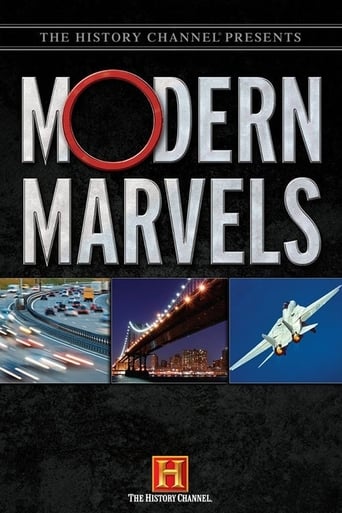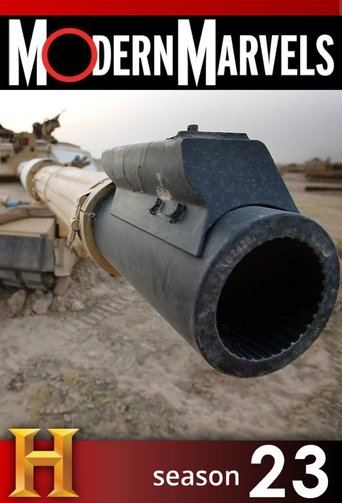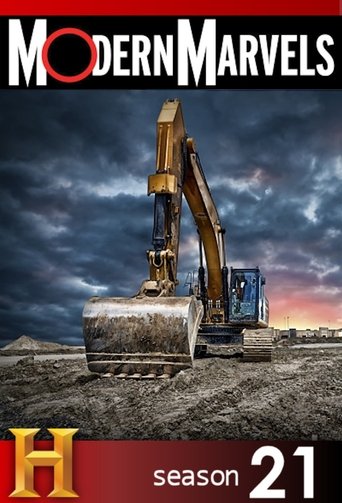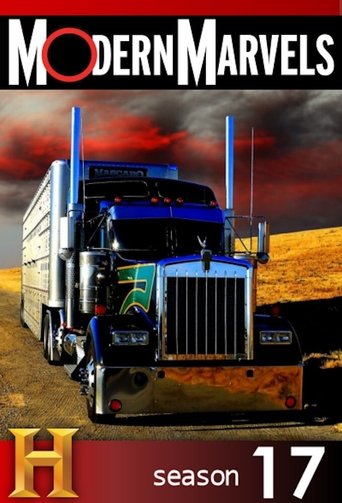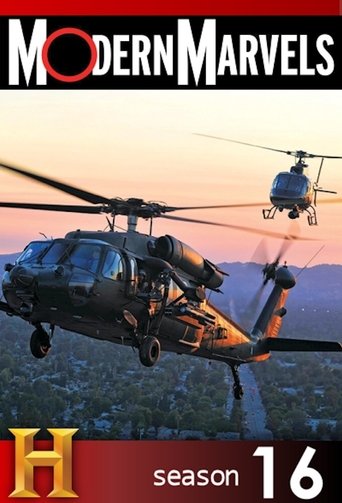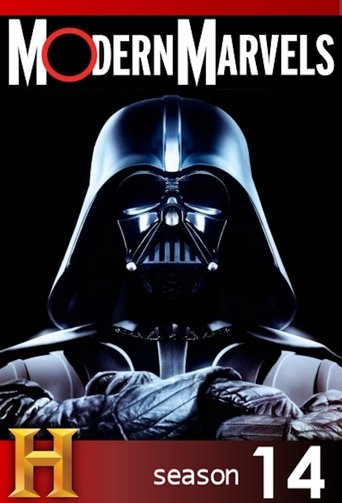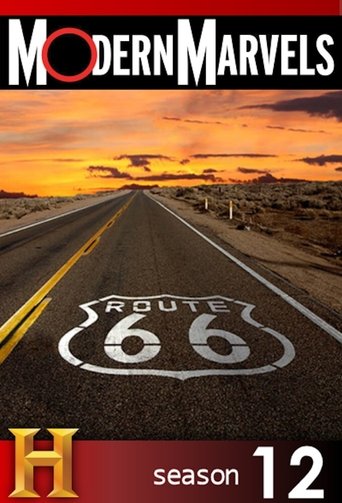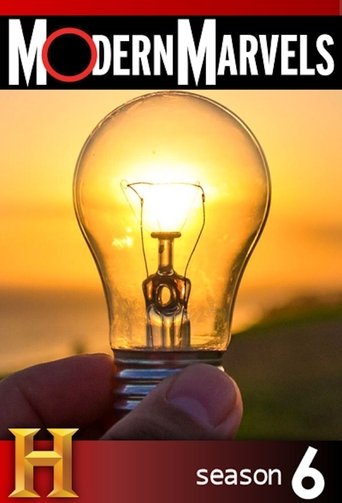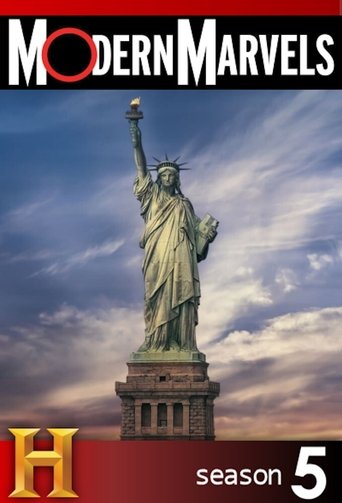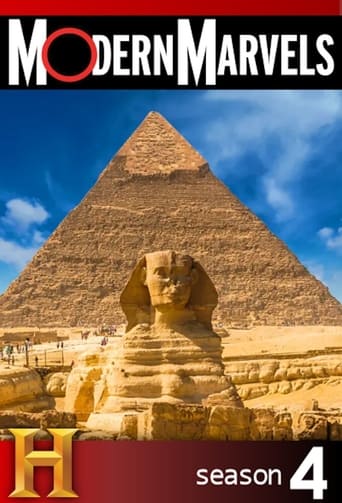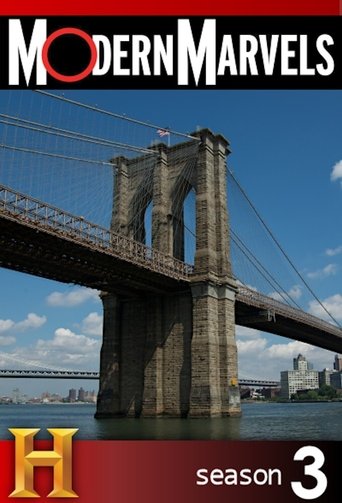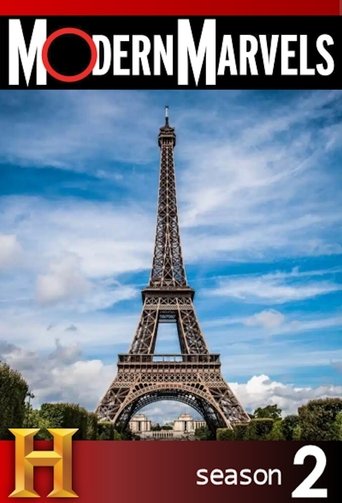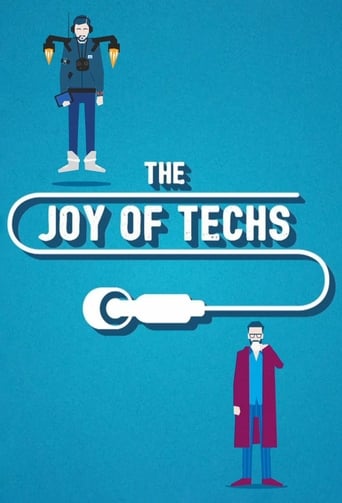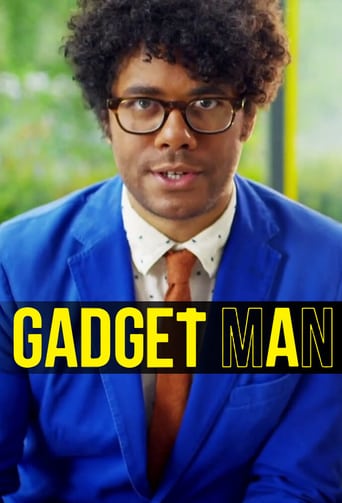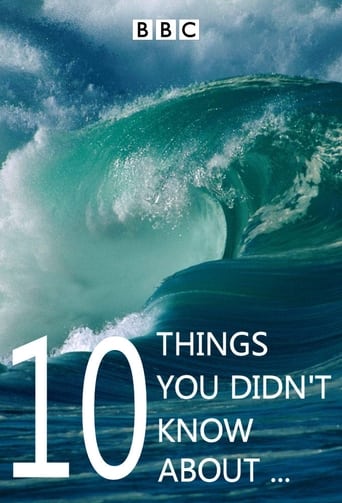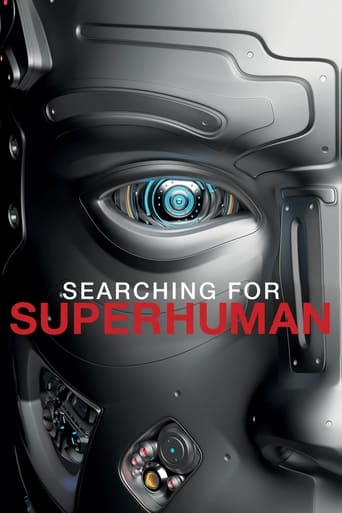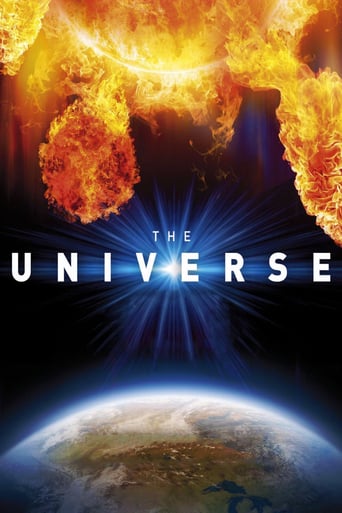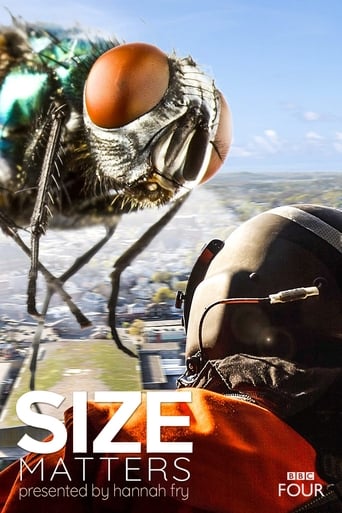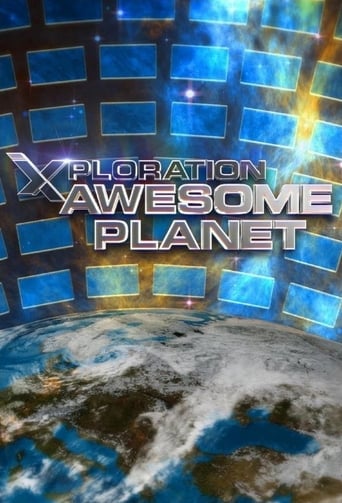Modern Marvels Season 8

HISTORY’s longest-running series moves to H2. Modern Marvels celebrates the ingenuity, invention and imagination found in the world around us. From commonplace items like ink and coffee to architectural masterpieces and engineering disasters, the hit series goes beyond the basics to provide insight and history into things we wonder about and that impact our lives. This series tells fascinating stories of the doers, the dreamers and sometime-schemers that create everyday items, technological breakthroughs and manmade wonders. The hit series goes deep to explore the leading edge of human inspiration and ambition.
Watch NowWith 30 Day Free Trial!
Modern Marvels
1993 / TV-PG



HISTORY’s longest-running series moves to H2. Modern Marvels celebrates the ingenuity, invention and imagination found in the world around us. From commonplace items like ink and coffee to architectural masterpieces and engineering disasters, the hit series goes beyond the basics to provide insight and history into things we wonder about and that impact our lives. This series tells fascinating stories of the doers, the dreamers and sometime-schemers that create everyday items, technological breakthroughs and manmade wonders. The hit series goes deep to explore the leading edge of human inspiration and ambition.
Watch Trailer
Modern Marvels Season 8 Full Episode Guide
It is a majestic structure that rises boldly over the Mississippi river–40,000 tons of steel and concrete that create the biggest arch of its kind in the world. Nothing like it had ever been built before, nor attempted since. We’ll see how its simple and elegant form results from remarkable achievements in construction and engineering.
Discover how military and police personnel, as well as private citizens, hone their shooting skills with one of the oldest of training techniques when we review the history of firing ranges–from a simple knot on a tree, old bottles, rusted tin cans, and highway signs to high-tech targets and advances in weaponry.
Glass may be our most versatile material. It sheathes skyscrapers, contains liquids, aids vision, allows communication at unimaginable speeds, and yet remains a medium for artistic expression. We see how, when man learned that heating certain rocks and minerals together could produce glass, this remarkably transparent yet strong material began working its way into our culture and everyday life. As we look to its future, we learn that the only limit to what glass may do is our ability to imagine it!
Unruly and eclectic, Los Angeles is home to an array of engineering and construction marvels that rivals any city in the world. No single word can sum up the L.A. experience, but the five marvels we profile give a sense of the breadth and scope of the city’s achievements: the new Red Line Subway system that barrels through a mountain range; the freeway system; Los Angeles Colisseum, built in 1923; the billion-dollar Getty Center that houses the family’s artwork; and Disneyland, the first theme park.
The Crossroads of the World, New York City’s Times Square is the screaming marketplace of our culture and time. It’s urban life pushed to the limit–the most electrified, visceral, crowded, and vibrant area in the world’s most dynamic city. A unique district that forever changes its face, it sank into crime and sleaze in the 1970s, only to rehabilitate in the ’90s into a dubious family entertainment paradise. Join us for a trip to America’s Town Square at the intersection of Broadway and 7th Avenue.
Join us for a ride through the history of car-culture commerce from the first gas station to the drive-thru funeral parlors and wedding chapels of today. We chronicle the birth of the first drive-in restaurants that paved the way for a billion-dollar fast-food dynasty, and feature many lesser-known drive-thru venues, such as dry cleaners, flu-shot clinics, liquor stands, and drug stores. And we’ll take a journey to the future to see what products might be passing through the drive-thru of tomorrow.
Modern Marvels looks at how army maneuvers have changed from simple “hide and seek” games to extremely complex and sophisticated operations that use computer simulations.
More than 2-million people die in the U.S. each year. That works out to about 5,500 burials a day, with roughly 80 percent taking the long goodbye in a casket, and the remaining 20 percent electing to be cremated or finding some alternative method of crossing eternity's threshold. We take a look at dealing with the dead throughout the centuries, and at today's $20-billion funeral industry. Any way you look at it, it's a healthy business, with new generations of customers year after year!
From the earliest bunkers of WWI through the ultra-futuristic ones of tomorrow's wars, we trace the story of defensive fortifications. In the constant struggle to hold off ever more potent forms of attack, bunkers function in a variety of forms. Three mammoth block structures comprise a submarine bunker at Lorient, France, able to house 20 subs. We visit Churchill's Cabinet War Room and Hitler's Berlin bunker, as well as backyard Cold War bunkers and those that protect nuclear weapons themselves.
From the riveted blue jeans of the old ’49ers, working the gold mines of California, to the million-dollar suits astronauts wear in outer space, we see how “dressing for success” often means being able to get the job done. With the right work clothes, people have been able to go anywhere and do any job.
If walls could speak…And in the next two hours they will, as we build a house literally from the ground up, step by step, room by room. We’ll pour the foundation, frame the walls, wire the electricity, install the heating, hang the drywall, tile the roof, and carpet the floors. All to show you how and why it’s done. We even take you back in time to see the bitter power struggles, accidental discoveries, and monumental breakthroughs behind today’s building methods and materials.
Half a mile below the earth’s surface, men mine for rough diamonds–a pure carbon substance. Brilliant when cut and polished, they are marketed as the most precious gem in the world. From the earliest mines of the 4th century BC to today’s technological wonders in South Africa, we explore the history and technology of the diamond mine.
Dynamite explodes hills to bits, drills divide sheer stone walls, 400,000-pound blocks are pulled from pits by giant cranes, and men work around the clock to wrest rock out of the earth. Not diamonds or gold…rock, the raw material of civilization! Without rock, modern society wouldn't exist. Roads, sewers, dams, bridges, buildings, paint, glue, make-up, antacids, and even chewing gum need crushed stone. From ancient days to the present, we explore the evolution of quarrying techniques.
For nearly 200 years, the U.S. Military Academy at West Point, New York, has trained students in the art of war. Located 50 miles north of New York City, its 25 buildings overlook the Hudson River on a 16,000-acre government reserve. During the Revolutionary War, West Point stood guard over the river, protecting it with artillery and a 136-ton chain! From humble beginnings, the academy grew with the nation, as each war forced changes to keep pace with America’s expanding world responsibilities.
From barnstormers to Blue Angels, antique aircraft to supersonic jets, each year there are an astonishing 425 air shows in America alone, entertaining over 18-million spectators. From futuristic festivals to billion-dollar expos, we explore the world of amazing aerobatics and their ever-evolving aircraft and see how aviation technology has affected air shows–and how air shows have advanced aviation. Find out why these high-flying events are second only to baseball as America’s favorite family event.
The most priceless jewels in the arsenals of a handful of countries, some nuclear submarines carry more firepower than all the bombs dropped in history. Since the 1950s, these lethal steel sharks have been a cornerstone of U.S. defense policy. The Cold War launched an underwater race for supremacy with the Soviet Union. The result: engineering miracles, which roam 70% of the earth’s surface, providing deterrence to enemies, intelligence about adversaries, and an abiding sense of dread.
Cannons have fired balls of iron and atomic bombs, changed the way wars are fought, and now come equipped with smart weapons. Beginning with 13th-century cannons that were designed to penetrate forts of the day, we'll see how cannons were first cast and later forged, and show how large cannons terrorized civilians and soldiers in WWI and WWII. Moving to the present, we feature the 40-ton self-propelled Crusader that launches 100-pound steel artillery shells more than 33 miles.
From the 19th century’s legendary cattle drives to the million-acre ranch kingdoms that sprang to life with the end of the Open Range to 21st-century techniques that include artificial insemination, embryo transplants, and genetic engineering, we review the history of cattle ranching. We’ll ride herd with modern cowboys as they twirl ropes and brand calves, and look to the cattle ranch of the future, where cloning will produce the ideal meat-producing steer with a consistently juicy, low-fat carcass.
A salute to the tools and toys that have stood the test of time–from the Zippo lighter to the Palm Pilot, the 21st century’s first great gadget. As we focus on the technology behind familiar gadgets, we see the subtle ways they have changed our lives. Other items include the flashlight, transistor radio, safety razor, and the metronome. We also go behind the scenes at Herbst-Lazar-Bell, a cutting-edge industrial design firm, and Gadget Universe, a fledgling retailer trying to topple the Sharper Image.
From a computerized liquor-dispensing system in modern L.A., to a ladle and a tin cup in an 1850′s mining camp, MODERN MARVELS investigates the history and technology of the American saloon.
Modern Marvels explores the evolution and future of the things that hold our world together. From the blacksmith to the Home Depot, it’s the story of nails, screws, mollybolts, duct tape, and super glue. We will visit one of the oldest hardware stores in America, Placerville True Value and wander the aisles of the mega-giants like Home Depot and OSH Hardware. This program chronicles the rise of the hardware “Big Box” super stores and how the mom and pop, local hardware stores, still manage to survive.
An historical look at the technological engineering of the World Trade Center. The special was completed and the interviews took place before the tragic events of September 11, 2001. Rather than remake the program to reflect the horrors of that day, our program stands as an historical record to the wonder it once was–from the construction of this technological feat to the daily working of its complex system. The program offers some of the last interior footage of the Twin Towers.
Modern Marvels brings the heart of the Roman Empire back to life through the rich history of this famous amphitheater. Built in 70 AD, the Roman Colosseum seated 80,000 people, boasted a retractable roof, underground staging devices, marble seating, and lavish decorations. To this day, it serves as the prototype for the modern stadium. The complexity of its construction, the beauty of its architecture, and the functionality of its original design made the Colosseum the perfect place for massive crowds to congregate for the bloody spectacles it was built to contain.
The most powerful assault rifle ever used in combat, the M-16 became the symbol of our lost war–Vietnam–and can easily be called America’s most unloved gun. Yet, 30 years after its introduction, it stands as a potent icon of U.S. military strength worldwide. We’ll explain how it almost ended up on the scrap heap!
Whenever a culture reaches a level of sophistication in literacy, science, and language, codes spring up spontaneously. As the social life of a community increases in complexity, the demands for private communication between two or more people inevitably lead to cryptology–a system of secret symbolic messages. We explore the rich history of communicating with secret symbols–from Egyptian hieroglyphics to Caesar's encrypted directives, from WWI and WWII codebreakers to cyberspace.
In this history of international airports, we focus on several airports to illustrate the developments and technology of their construction and operation, beginning with Miami’s Dinner Key and including New York City’s LaGuardia and JFK, London’s Gatwick, Dulles near Washington, D.C., Los Angeles’ LAX, Denver International, Japan’s Kansai, and Korea’s new Inchon. It all began on a farmer’s field near a flat beach–the next step may see them expand into interplanetary platforms!
This episode of Modern Marvels examines the history and technology of chemical and biological warfare, which can be traced back at least four-thousand years, to the wars of ancient India, when soldiers used toxic fumes against their enemies.
When design flaws fell projects, the cost is often exacted in lives as we see in this look at engineering disasters. Why did the Tower of Pisa begin to lean by as much as 17 feet; what caused the first nuclear accident in 1961 in Idaho; what killed three Soyuz 11 cosmonauts aboard the world's first orbiting space station; how did a winter storm destroy the Air Force's Texas Tower Radar Station, killing 28; and what errors led to NASA's loss of the Mars Climate Orbiter and the Mars Polar Lander?
From colossal devices designed to save the world to mind-expanding, world-shrinking machines, we trace the evolution of mice and menus. Learn about the world’s most powerful computer, IBM’s ASCI White, that operates at 12-trillion calculations a second. See how the first room-sized computers, such as ENIAC, changed the world. Bite into Apple’s history, the machine that made computers a household appliance. And peer through a microscope to see the molecular computers of the future.
From the earliest known lighthouses, such as the Pharos of Alexandria, one of the Seven Wonders of the Ancient World, to modern-day automated buoys and solar-powered lantern rooms, this history of lighthouses is rich with personal stories of lighthouse keepers, daring construction efforts, and ingenious optical discoveries. Today, as lighthouses are usurped by more efficient aids to navigation, these elegant structures are being converted to bed-and-breakfast inns and environmental retreats.
Ride shotgun in our rollicking history of the Monster Truck, and meet the father of the mythic beast, Bob Chandler, whose EM Bigfoot /EM gave birth to the sport in a cornfield years ago! Weighing 10,000 pounds, the behemoths entertain using brute force. Thrill to breathtaking stunts in California, Indiana, and Florida, as mounted cameras demonstrate the shakes, rattles, and rolls drivers experience; and meet the men who race these mechanical mammoths in one of the world's fastest-growing motorsports.
Leonard Nimoy hosts half hour documentaries which explore unusual natural and supernatural phenomena. In this episode, he takes a look at Hadrian’s Wall.
Feel the earth move under your feet and dig into the fascinating story of earthmoving equipment–from the simple spade to today’s powerful steam shovels. Meet legendary giants like John Deere, Jerome Case, and the founders of Caterpillar, who helped forge America’s monolithic construction industry. Ride on specialized behemoth dump trucks, delve below sea level to view dredging equipment, and leave the planet altogether to explore earthmoving space equipment in this 2-hour special presentation.
The household garage serves as the at-home sanctuary for the modern American male. Most men consider themselves to be “handy around the house”. Fathers and husbands see it as their role to provide for and take care of the family’s home and possessions. From lawn care products to snow removal and outdoor cooking, the Garage Gadgets of Do-It-Yourselfers have evolved over decades to face the ever-changing challenges of maintaining a home.
Named one of the seven engineering wonders of the modern age, the Chesapeake Bay Bridge and Tunnel connects Virginia proper with its easternmost landmass. Stretching 17 miles across the historic Chesapeake Bay, the structure represents a man-made boundary between the Bay and the Atlantic. The structure includes two 2-lane highways supported mostly by trestles, four man-made and one natural island, two truss bridges, and two revolutionary sunken tube tunnels.
In an historic survey of man’s adaptation to killer environmental conditions, we travel to the desert, the Arctic, the sea, jungle, and space, charting the body’s physiological responses to extreme circumstances such as frostbite, heatstroke, and hypothermia. We talk with military survival experts and learn about the latest cutting-edge survival gear, as well as the equipment aboard the space station, and look to the future, when nano-technology will create a new type of technology.
The Apollo 13 mission was intended to be a “routine” trip to the moon. But when an oxygen tank exploded, the spacecraft was crippled and its 3-man crew placed in mortal danger. The Lunar Module, intended for deployment on the moon’s surface, instead became a lifeboat. Scientists and engineers on earth fought a race against time to save the crew. We’ll examine the mission, which nearly ended in tragedy, but instead was a resounding success, and in some ways became NASA’s finest hour.
Commercial Jets traces the evolution of commercial aviation from the stumbling beginnings of the De Havilland Comet to the wide-body rocket ships of today. This is the story of a high-tech worldwide competition among a field of high stakes players. Billion dollar deals ride on cutting-edge designs to carry more passengers father, faster and safer.
Where can you fire a missile without scaring the neighbors? Or lift millions of pounds in pursuit of a couple of ounces of gold? On a proving ground, of course, where performance is the only thing that matters. Because in the heat of battle or head-to-head competition, no excuses can be given. We’ll visit the US military’s Cold Regions Testing Center in Alaska and desert proving grounds in Arizona, the Olympic Complex in Colorado, and the now-defunct Packard proving grounds in Michigan.
From battle armor to bubble gum, you might be surprised by what soldiers have carried into battle–and what they'll carry in future wars. In this look at the development of weapons–from the Roman soldier's gladius to the M16 assault rifle to infrared scopes and biological weapons protection–we also discover the evolution of body armor–from knights to Kelvar-protected "Land Warriors". And we'll also find out what the "Future Warrior" will look like.
Free Trial Channels
Seasons


